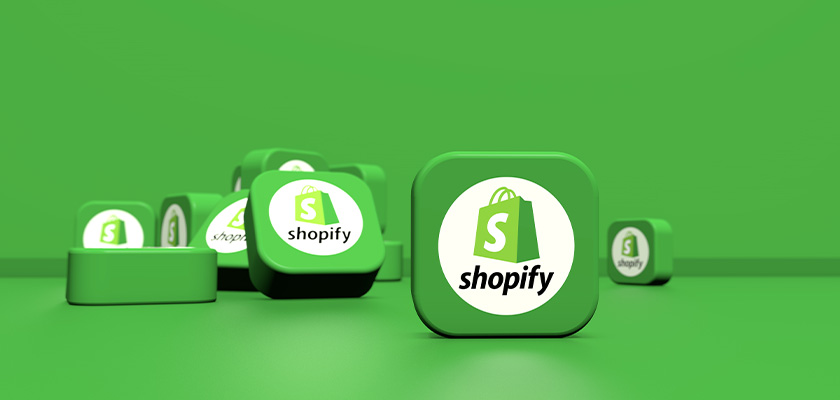3 Ways to Design the Perfect Interactive Product Presentations for E-Commerce
Global e-commerce marketing is booming, with around $6.310 trillion in spending expected in 2024. In this competitive market, capturing the attention of potential customers is an art, and your product presentations are the brushstrokes. When prospective clients stumble upon...

Global e-commerce marketing is booming, with around $6.310 trillion in spending expected in 2024. In this competitive market, capturing the attention of potential customers is an art, and your product presentations are the brushstrokes. When prospective clients stumble upon your ads while they scroll through their social media feeds, they will need more than just an alright image or discount offer. A different experience can mark the difference between being overlooked and standing out.
We live in an age of heightened visual expectations; businesses can’t afford to settle for mediocrity in their product imagery. Here are three strategies to design great product presentations, ensuring your e-commerce venture meets and exceeds your audience’s lofty expectations.
Here are vital considerations when designing the aesthetic of the product page (we’ll offer some more tips on this later as well):
Determine the optimal amount of information required to inform potential buyers about the product without overwhelming them Strive to balance providing essential details such as product specifications, pricing, and availability and avoiding information overload that can deter users from purchasing Minimize the clicks and scrolls necessary for users to access key product features and make informed decisions Choose a template design that balances simplicity and complexity, offering a clean and intuitive interface while still providing sufficient depth and functionalityIdea #1: Create Comprehensive Infographics
There is no way visuals and information converge better than comprehensive infographics. Suitable for all business models, quality infographics seamlessly blend the allure of captivating photography with the precision of just the right amount of description.
One tip we’ve found discussed in many popular online graphic design degree programs is deconstructed product photos seamlessly integrated into your infographics. By peeling back the layers of your products, you reveal their intricate components in a visually stunning and informative display. This avant-garde technique takes your product presentations to a whole new level, offering your audience more than just a glimpse–it provides them with an interactive understanding of how your products work and why they stand out.
The fascination with deconstructed products is rooted in our innate curiosity. People love to unravel the mysteries behind functionality, and showcasing products in their disassembled form satisfies this desire to understand the inner workings. Integrating these deconstructed images into your infographics allows your customers to embark on a visual journey, exploring each part and appreciating the craftsmanship behind your offerings.
Editing product photos to remove backgrounds and adding concise descriptions is a common practice. However, deconstructing the product and capturing those individual components sets you apart, turning your infographics into educational and visually arresting pieces that leave a lasting impression.
Idea #2: Leverage User-Generated Content
Engaging potential customers is not just about showcasing your products; it’s about inviting them to be an integral part of the experience. This is where user-generated content (UGC) can dynamically amplify your product presentations and can potentially drive significant sales.
The concept is simple: let your customers become the storytellers of your brand. Users sharing their experiences through videos or photos featuring your products creates a genuine and relatable narrative. This adds authenticity to your brand and taps into the inherent desire of consumers to see real people interacting with and enjoying your offerings.
Encouraging your customers to contribute to your product presentation is a strategic move that pays off in multiple ways. Firstly, it provides a ready-made library of content–authentic, diverse, and reflective of real-life usage. Imagine having a video presentation of your product without investing time and resources in creating it yourself. User-generated content becomes a dynamic, ever-growing asset that brings life into your brand.
There’s also a psychological element at play. Customers inherently trust other customers. When they see their fellow consumers sharing positive experiences with your products, it builds a sense of reliability and authenticity. UGC transforms your product presentation from a one-way communication to a community-driven dialogue, fostering trust and connection. Utilizing ecommerce outsourcing is a great way to save time on tasks such as order fulfillment, shipping, and customer service, allowing you to focus on social management. Finding the right people to create your UGC and promote your brand. Here are some helpful tools to make your UGC strategy easier to implement:
Aggregation and Analytics SoftwareAggregate content from multiple social media platforms into one feed and analyze user behavior and market trends based on hashtags, mentions, and more.
UGC Contest SoftwareRun engaging contests and giveaways to encourage UGC, boost brand engagement and create hashtag campaigns and photo-sharing contests to drive user participation.
Collaboration softwareSoftware specializing in influencer marketing and UGC campaigns empowers businesses to collaborate with relevant influencers and generate authentic content that resonates while also making it easier to identify influencers aligned with your brand values.
A virtual assistantIf you want to run your own searches, you can have a virtual assistant do the leg work for you. They can identify, contact and negotiate deals with potential influencers to help build your bank of UGC. Follow this virtual assistant guide to ensure you choose the right person for the job.
Idea #3: Add Realism, Engagement, and Practicality to Product Images
Imagine being able to virtually hold a product in your hands and examine it from every angle before making a decision. This is the immersive experience that 360° photos bring to the table. Providing a complete overview, these interactive images allow potential customers to explore your product in a way that static images cannot match. As we strive for realism in our online shopping experiences, the ability to rotate and view a product from all sides becomes a powerful tool in aiding customer decision-making.
Along with this, nothing beats the visual impact of size comparison images. Placing another image next to the product for comparison purposes provides customers with a tangible sense of scale. This is particularly crucial for items that may find a place in a customer’s living room or workspace. Understanding how much space a product occupies in real terms enhances the customer’s ability to envision the product in their own environment, letting them make a more informed and confident purchase decision.
Finally, taking product presentation a step further, interactive photos invite potential customers to engage directly with your products.
For example, let’s say you’ve started your own make-up business, and it’s time to show people how your products can improve their lives. By incorporating animations activated through clicks on specific product parts, you provide an interactive experience that goes beyond static imagery. While it requires additional effort, the payoff can be significant. Being able to interact with a product virtually enhances customer engagement, making the online shopping experience not just transactional but also enjoyable and memorable.
How to Launch Your Product Successfully
Once you have your products looking their best, it’s time to plan the rollout. Your team or an eCommerce agency will work closely with you to develop a comprehensive launch strategy tailored to your product and target market. They will conduct market research, analyze competitors, and identify opportunities to position your product effectively. Here are some quick points to consider as part of this:
Define the story that revolves around your product’s bigger purpose and tailor the narrative for social platforms, landing pages, and email campaigns. Display customer testimonials and reviews to build positive perceptions. Develop a full-fledged social media campaign to heighten interest and awareness. Provide consumers with the option to pre-order the product before its official release.The last point is important to capitalize on early interest and demand. Have a pre-order process on your website or through other sales channels, offering incentives such as exclusive discounts or bonuses to incentivize early purchases. Leverage pre-orders to gauge customer interest, generate revenue, and build anticipation for the official launch of your product.
Your email list is a key communication channel for this, and you should continually put in the time and utilize tools to help you expand your mailing list. Send reminder emails leading up to the launch date to keep your subscribers informed and engaged. Put a countdown in your emails to create urgency and encourage people to act quickly before the product becomes available.
Crafting the aesthetic of your product page
Finally, the product page serves as the digital storefront for your merchandise, playing a pivotal role in driving sales and enhancing the overall user experience. Achieving the perfect balance between usability and desirability is essential to maximize conversion rates and foster customer engagement.
By carefully considering these factors and utilizing our interactive product presentation ideas, you can effectively showcase your merchandise, drive sales and leave a lasting impression on your customers. Good luck!

 Tfoso
Tfoso 
































